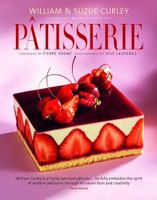The Beginning
By William Curley and Suzue Curley
Published 2014
Baking flourished in the Roman Empire. Around 300 bc, the pastry cook became an occupation for Romans (known as a pastillarium). It became a respected profession because pastries were considered decadent, and the Romans loved festivity and celebration. Pastries were often cooked for large banquets and pastry cooks inventing new creations were very highly prized. A baker’s guild was established in 168 bc in Rome and by around 1 ad there were more than 300 pastry cooks in the city. As a result of their vast and expanding empire, the Romans discovered an endless variety of condiments and ingredients to be used in their cooking and spread many of their culinary techniques throughout the European empire, especially their early techniques of making pastry.
Become a Premium Member to access this page
Unlimited, ad-free access to hundreds of the world’s best cookbooks
Over 160,000 recipes with thousands more added every month
Recommended by leading chefs and food writers
Powerful search filters to match your tastes
Create collections and add reviews or private notes to any recipe
Swipe to browse each cookbook from cover-to-cover
Manage your subscription via the My Membership page
Part of
Advertisement
Advertisement


